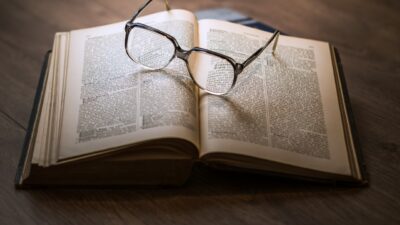Reaction to and prevention of Holocaust distortion
Objectives:
- To reflect upon the differences between reacting to and preventing Holocaust distortion
- To discuss concrete actions that can be taken to react to Holocaust distortion or to prevent it
- To identify challenges in addressing Holocaust distortion and ways to overcome them
Number of participants: 5–30
Duration: 90 minutes
Description of the activity:
- The trainer explains to the participants that in this session they will address not only the responsibility of reacting to and preventing Holocaust distortion, but also concrete ways of doing it. Firstly, they are going to watch a couple of short videos and afterwards, they will discuss a few case studies.
- In the two short videos (one-minute each), two Holocaust survivors share their perspective on dealing with distortion and denial.
Video 1: Allan Brown – Do not ignore, but react
Video 2: Nina Kaleska – Do not give them a platform
- Whenever playing videos of Holocaust survivors, it is important to give participants a short bio of the person, even if (or especially if) the video covers only a small part of the testimony. This serves as a way to remember and honor, as well as to avoid using testimonies without proper contextualization. Here are short bios of the two speakers, that can be shared with the participants:
Alan A. Brown (Braun) was born in 1928 in Miskolc, Hungary. At 16, he was sent to a coal mine in Kosice with his father. Together they were deported to a camp in Sopron, to Feldbach labour camps in Austria and finally to Neuhaus. His father died in April 1945, one day after the camp was liberated. All of his relatives were killed in concentration camps. He emigrated to the United States and, after a while, settled in Windsor, Canada.
Nina Kaleska was born on April 11, 1929 in Grodno, Poland (now Belarus). She was deported with her sister to Auschwitz in 1941. Her sister died three months after they arrived. Nina became sick in the camp several times and was able to overcome this with the help of a woman named Martha, who worked there. She was forced to go on a death march and was eventually liberated by Allied Forces on May 5, 1945. She emigrated first to England and then to the United States with the help of the American Joint Distribution Committee.
- The trainer engages the participants in a discussion based on the two videos by asking them to share:
- Of the two perspectives, which one resonates with you more? Why?
- Brown said that he found it very difficult to talk about what happened to him, but the discussion with the student made him willing to start doing it, even if it was hard for him. What do you think made him change his mind?
- Why do you think that Ms. Kaleska considers we should not engage with people who deny the Holocaust, in order to not give them a platform? Do you think she would say the same thing about people who distort the Holocaust? Why? Why not?
- The trainer explains that:
- not giving people a platform to express antisemitism and Holocaust denial goes beyond refusing to engage with them. It also entails a responsibility to limit the spread of their message and to empower young people to counter it.
- countering Holocaust distortion requires both the work to prevent it from manifesting and to react when it does manifest. The two videos show how people reacted when they were faced with deniers. However, an important component of addressing Holocaust denial and distortion is prevention.
- The participants are asked to work in groups and are given two tasks
- Firstly, they are asked to look at the list of examples made in the previous activity (what is being done and what can be done to combat Holocaust distortion and other forms of disinformation and intolerance) to identify which ones are examples of reaction to Holocaust distortion and which ones are examples of prevention of Holocaust distortion.
- The second task is for each group to discuss one of the case studies described in the Annex or another case of Holocaust distortion present in their society that they want to address. Each case study should be analyzed based on the following questions:
- What could be the context factors that have led to this situation?
- How can civil society respond to this form of manifestation of Holocaust distortion?
- Who are the entities that should take action to combat this form of Holocaust distortion?
- Who might be interested in maintaining the status quo or supporting the further development of this form of Holocaust distortion? What could persuade these people/entities to change their mind?
- Each group presents. First, they read the case study out loud for the other participants, then they share their reflections.
- After all the groups present, the trainer engages the participants in a debriefing discussion. Firstly, they are asked to briefly share about the analysis of the examples from the previous activity:
- Were the examples on the list mainly reactions to or prevention of Holocaust distortion?
- Are there some situations in which both preventative and reactive measures are needed? Why?
Then, they are invited to debrief the analysis of the case studies. From the discussion and presentation of case studies:
- Are the cases discussed similar to what is happening in the context in which you live/work?
- In the situations of Holocaust distortion that you encountered in your life, what were the main challenges in reacting to them?
At this point, the trainer can bring into discussion the fact that countering Holocaust distortion is not easy and it is unlikely one would know intuitively how to react. This acknowledgment can lay the ground for an open and honest exchange.
- What are, in your opinion, the most feasible actions to be put into practice, from the ones that were discussed?
- What is your main learning point from this activity?
- The trainer emphasizes the importance of addressing Holocaust distortion as soon as it is identified, in order to not allow for it to become a norm or to escalate. The trainer acknowledges the difficulty in combating certain forms of Holocaust distortion, especially if they are state sponsored. Cooperation, joint actions, and complementary actions can be made by civil society in order to ensure impact in such situations. The trainer encourages the participants to think of ways in which they can collaborate with other entities in their attempts to prevent and combat Holocaust distortion.
Materials
lesson plan
Training Outline
reading
Annex – Case studies
On this Topic
Lessons for
Topic
Number of participants:
Average Duration of Lesson:

